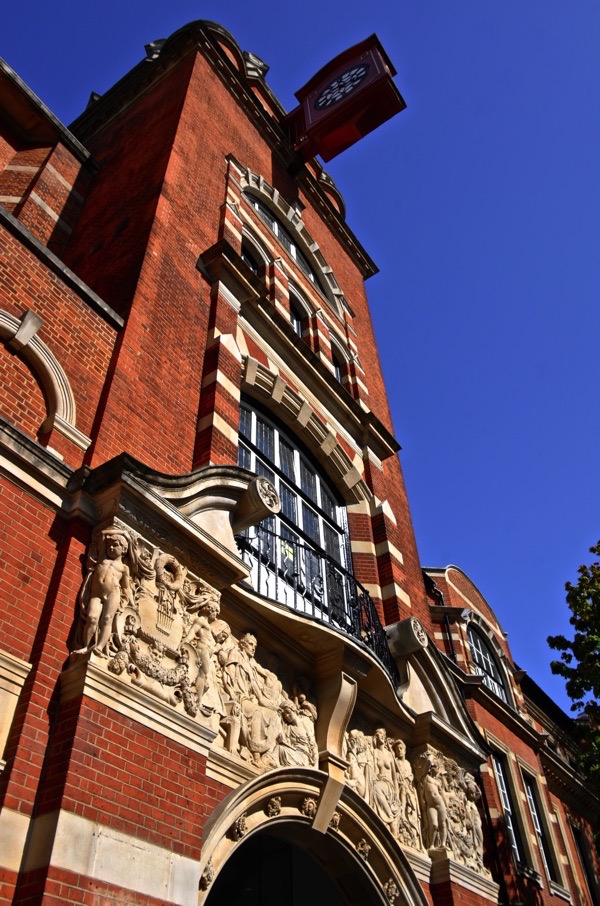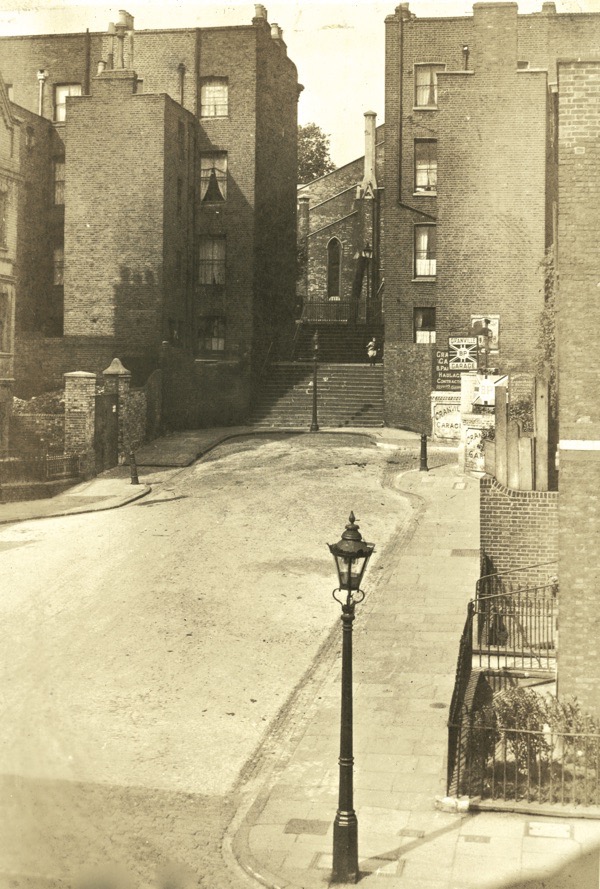
Does anyone know where Finsbury is anymore? If you ask people, they say “Do you mean Finsbury Park or Finsbury Sq?” It seems that the Metropolitan Borough of Finsbury is as lost to us as Atlantis, El Dorado or Shangri La.
Studying Colin O’Brien’s wonderful photographs of Finsbury in the fifties in his forthcoming ‘London Life‘ brought this now-defunct Borough to mind, but it was Arnold Bennett who first led to me to Finsbury to seek the locations of his plangent novel of the booksellers of Clerkenwell, ‘Riceyman Steps.’ Thus it was that I decided to set out with my camera yesterday on a return visit in search of old Finsbury.
Finsbury occupied the site of an ancient fen that lay north of the City of London, but it only formally came into existence as a Parliamentary Borough in 1832 and by 1965 it was absorbed into Islington. Yet Finsbury may be said to be the territory west of Shoreditch, north of the City, east of Holborn and south of Islington – although, in my mind, the heart of Finsbury is around the old Finsbury town hall and it was this area that I chose to explore.
Walking up from Farringdon Station, along Turnmills St and Farringdon Lane, you encounter some of London’s earliest Peabody flats. Finsbury was well served by high quality social housing, from these handsome Victorian brick tenements to the post-war modernist Finsbury Estate on the other side of Clerkenwell – and it is the sympathetic counterpoint between these developments and the old terraces of the bourgeoise that define the personality of the place. A great many of the streets in Finsbury have not changed since Arnold Bennett’s time and the shabby old London that he wrote of may still be glimpsed by the perceptive visitor.
Crossing Rosebery Avenue and walking up Amwell St, you meet fine early-nineteenth century terraces and peaceful squares where a stillness prevails that is exceptional in central London. Major roads hem these streets and render them as backwaters without through traffic.
Willmington Sq is the first you discover, constructed around a small overgrown park and of pleasing domestic scale. Further up the hill, Myddelton Sq is the grandest in Finsbury yet you barely encounter a car there. City University fills up the lost part of Northampton Sq that was demolished, delivering students onto the lawn and encouraging an unexpected atmosphere of youthful fête champêtre.
Lastly, I would never have discovered Granville Sq, if I had not gone in search of ‘Riceyman Steps’ where the protagonist of Arnold Bennett’s novel had his bookshop. Although the bookshops of the steps are long-gone, this modestly-proportioned square paved with old flags and punctuated by manhole covers produced by local foundries is one of my favourites in the capital. Granville Sq may truly said to be part of the London nobody knows.

Looking up Farringdon Lane

Looking along Clerkenwell Rd

Inside Three Kings, Clerkenwell Close

In Pear Tree Court

In Clerkenwell Close

Finsbury Health Centre by Berthold Lubetkin

Joseph Grimaldi lived in Exmouth Market

At the junction of Exmouth Market and Rosebery Avenue

Finsbury Town Hall

Passageway to Lloyd Baker Sq

In Great Percy St

At George Cruikshank’s house in Amwell St

Fig Tree at Clerkenwell Parochial School in Amwell St

Lloyd’s Dairy in Amwell St

In Myddleton Sq

St Mark’s, Myddleton Sq

In Myddleton Sq

In Arlington Way

City University, St John St

In Northampton Sq

In Margery St

In Lloyd Baker St


In Lloyd Baker St


In Granville Sq


Gwynne Place also known as ‘Riceyman Steps’ – leading from Granville Sq to King’s Cross Rd

‘Riceyman Steps’ in 1924
You might also like to read about